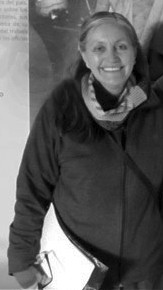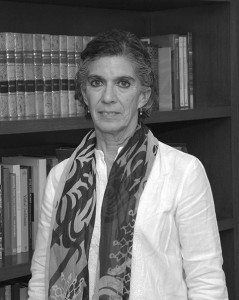The Museum of Arts and Crafts: An Ethnographic Perspective
The Museum of Popular Arts and Industries in the city of Patzcuaro was established a little more than 72 years ago by a presidential decree of Lázaro Cárdenas. His purpose was to reassert the economic and aesthetic value of the manufactures of the Purepecha people, and this aim still holds today. For this reason the eighteenth-century building with its 11 rooms was fitted out as an exhibition space. The building was adapted from the original building of the San Nicolás College founded by Vasco de Quiroga in the sixteenth century. The museum, its displays and collections have been through several reincarnations since it was established, as testified by the series of photographs and papers documenting the changes. The renovation carried out in the 1970s deserves special mention, as it introduced showcases made by the Cerda family of carpenters from Patzcuaro and uncovered part of the yacata (circular-plan pyramid) found in the rear patio. The museum reopened its doors in December 2010 after new maintenance work to the building and the renovation of the exhibitions, now given an ethnographic slant to stimulate the renewed interest of visitors, not only in the aesthetic aspect of the handcrafts, but also an interest in the way of life and organization of the producer towns.
The project
The commemoration of the Bicentenary of Independence and the Centenary of the Mexican Revolution provided the budget for the renovation of a number of Mexican museums. Michoacan was privileged to have three of its INAH museums included. These were the Michoacan Regional Museum, the Morelos House Site Museum, both located in the city of Morelia, and the Museum of Popular Arts and Industries of Patzcuaro. After the decision was taken, teams were formed in March 2008 to prepare the curatorial briefs, with the permanent exhibition of the Museum of Popular Arts and Industries of Patzcuaro coming under the charge of the researchers Aída Castilleja González and Catalina Rodríguez Lazcano. The redisplay was managed by the National Museums and Exhibitions Office of the National Institute of Anthropology and History. The first challenge was to define the extent of the changes to be made to the museum, since it concerned an old space evocative of the viceregal context of the city of Patzcuaro which was much appreciated by many of the people who knew it. On the other hand the museum had created a role for itself as a center for helping producers distribute and sell their craft products, although in recent times this aspect had been lost. Under these circumstances the challenge was to come up with a proposal which was in tune with the original purpose while reflecting advances in the understanding of history and ethnography. The process of preparing the curatorial brief began by making a list of themes emphasizing core aspects of the museum: the historical make-up of the region, understanding the multi-cultural tapestry resulting from the coexistence of different ethnic groups and the relationships between such groups with the non-indigenous groups of the region. Hence the guiding principle of the work was to comprehend the diversity of the arts and crafts produced today. This was the reasoning behind its name: the Museum of Arts and Crafts. In the first section the brief includes a chart demonstrating the composition of a cultural region. It is based on the settlement of the Uacusecha people, the extent of their influence and that of the Tarascan state, which came under the control of the Spanish Viceroyalty, reorganizing the civil, religious and economic life of the people, and also adjusting the forms of work to fit the needs of the new viceregal companies and the newly created urban centers. New specializations arose both in the indigenous towns and among the racially mixed population, which was organized around trade associations under the patronage of a saint. The second section, in a small exhibition gallery, is dedicated to the history of the building, and specifically to the institutions which it housed.
The third section looks at the arts and crafts produced by the Purepecha people. We have chosen to focus on certain topics, which as a whole provide visitors with a more thorough understanding of the complexity of the concept of work and which link each of the expressions of this work: the knowledge transmitted from generation to generation, membership of a regional social apparatus, the use of primary materials obtained from the local environment, the ability to reflect a state of permanence, or impermanence (which may sometimes involve the extinction of the craft itself) and the bringing together of many people working towards a single goal. This second part of the tour begins with a display on the primary activities: hunting, gathering, fishing, farming and the preparation of foods (of which corn was a central element). It includes pottery production; the building trades; work with vegetable fibers; crafts that are unique because they are specific to a particular settlement or to families within these because of the skill they require or because they are extinct; woodwork on an artisan and semi-industrial basis; lacquerware decoration; and everything connected with textile making, such as embroidery, backstrap weaving, treadle loom weaving and finally stringed instrument making which enables us to make the connection with music making. All of these arts and crafts, plus others that are not listed, are part of the weave which strengthens Purepecha society in this cultural or social region. However, the social pattern would be incomplete without mention of the relationships which are woven like threads through the exchange of goods and services among individuals and families, not forgetting the society’s devotional links to its protective entities and gods. Such relationships also extend across regions, linking the Purepecha to national and global markets.
To provide substance to the brief, we invited various specialists to write about each of the sections in the list of topics. Some of these experts wrote special texts for us while others allowed us to use sections of texts they had already written, and this is how the first version of the curatorial brief was written. Based on this we began to prepare the thematic brief, into which we brainstormed the initial proposals for potential display media and illustrative materials. It was an interesting exercise of the imagination to try to accommodate the topics into the galleries, which are of different sizes and have different environmental characteristics in terms of humidity, temperature and lighting. Along the way it was necessary to make numerous adjustments, above all when we had the first exchanges with the appointed exhibition designers, Enrique Martínez and Jesús Álvarez, with whom we gradually sorted out ideas, accommodating the material into the plan. Eventually we could picture the objects in display cases, on plinths or on panels.
Museum design
Even without having a clear idea of the final content, we got going with the job of drafting a preliminary version of the museum text based on the curatorial brief. The hierarchy of texts was separated into: an introductory text in the museum entrance translated into Purepecha, thematic summaries for each topic, detailed texts for all the elements of a topic, and object texts placed at the foot of the showcases, panels or plinths to give information on specific subjects related to the objects or topics presented.
It was also thought to be important to provide detailed information on the techniques of each of the crafts by means of hand-held guides illustrated with photographs or drawings complemented with directories of craftspeople open to being visited at their workshops. It was also suggested to us that we should incorporate computer-based media, so we commissioned a video recording of the processes of making cocuhas (giant amphorae), corn stalk paste, food preparation and the playing of regional music, as well as the photographic documentation of the work involved in making a canoe at Comachuen for transfer to the riverside town of Ichupio. This material was used to create five capsules for computer-based media, and we included a sixth by reworking a piece that had already been done for the INAH Media Department on the feast of Corpus Christi.
The collection
Apart from the museum design work, mention must be made of the collections to be included in the permanent display. Right from the start we were convinced that the museum’s extremely rich collection should be the basis for the display. Loans, donations and new acquisitions would be added to this. The search for new objects was one of the project’s most pleasant tasks, because the need for specific objects brought us into contact with people. The people we asked participated enthusiastically, sharing the best of their art, craft and knowledge.
For example, Naná Eulalia Navarro from Cuanajo painstakingly embroidered and sewed the complete dress for an image of the Virgin. Male Elvia from Zipiajo helped with the installation of an open-air oven together with pots of different sizes made by her and other women in her family, and a few items of women's clothing to represent her town in the museum; and she dressed the mannequin herself to ensure that the clothes were worn correctly. The same happened with the family of Lucas Mateo who dedicated themselves to dressing an accurate representative of Tarecuato. Tatá Camerino Ramos from Comachuen provided agricultural tools with their names in Spanish and Purepecha, and a list of the activities involved in the farming calendar. Likewise the family of Tatá Mauricio Cira came from Ichupio to get the final details right in the fishing scene to make sure that the objects he had given were correctly exhibited. Naná Juana Alonso from Cocucho, together with her daughter in law, granddaughter and great granddaughter, took on the job of representing four of the stages in the production of the slim tall pots for which her birthplace is famous, and they kindly allowed themselves to be photographed and videoed for a capsule. The selection of items to be included in the new museum displays showed very clearly that the appearance of craft objects can be deceptive, some are very much more durable over time than others. Craft specializations were also apparent, as certain craftspeople have made efforts to recover and recreate techniques which have barely endured.
Installation
Two weeks were sufficient for the carpentry firm to assemble and fit the dark brown furnishings, and for the installation team of the National Office for Museums and Exhibitions to transform the once empty rooms of the Museum of Arts and Crafts. At times the fast pace of the work challenged the close communication which the exhibition installers and curators had enjoyed, and in certain cases it was not possible to retain the subtleties set out in the brief. At times it was necessary to reinterpret or adapt, replacing the intended piece with another or swapping round the photographs or captions that went with an object. Nevertheless we think that the general result meets the objectives which we initially set out: to showcase the people who are behind the various types of work. The various styles of display highlight the distinctive products of the cultural regions, which can be seen and bought in the stores, markets, tianguis (street markets) and craft fairs of the city of Patzcuaro. Craft production is the result of knowledge, skill and dexterity involving dynamic and innovative transformations which men and women of different ages and situations have known how to make, adapting themselves to the changes imposed by the wider regional and national society.








